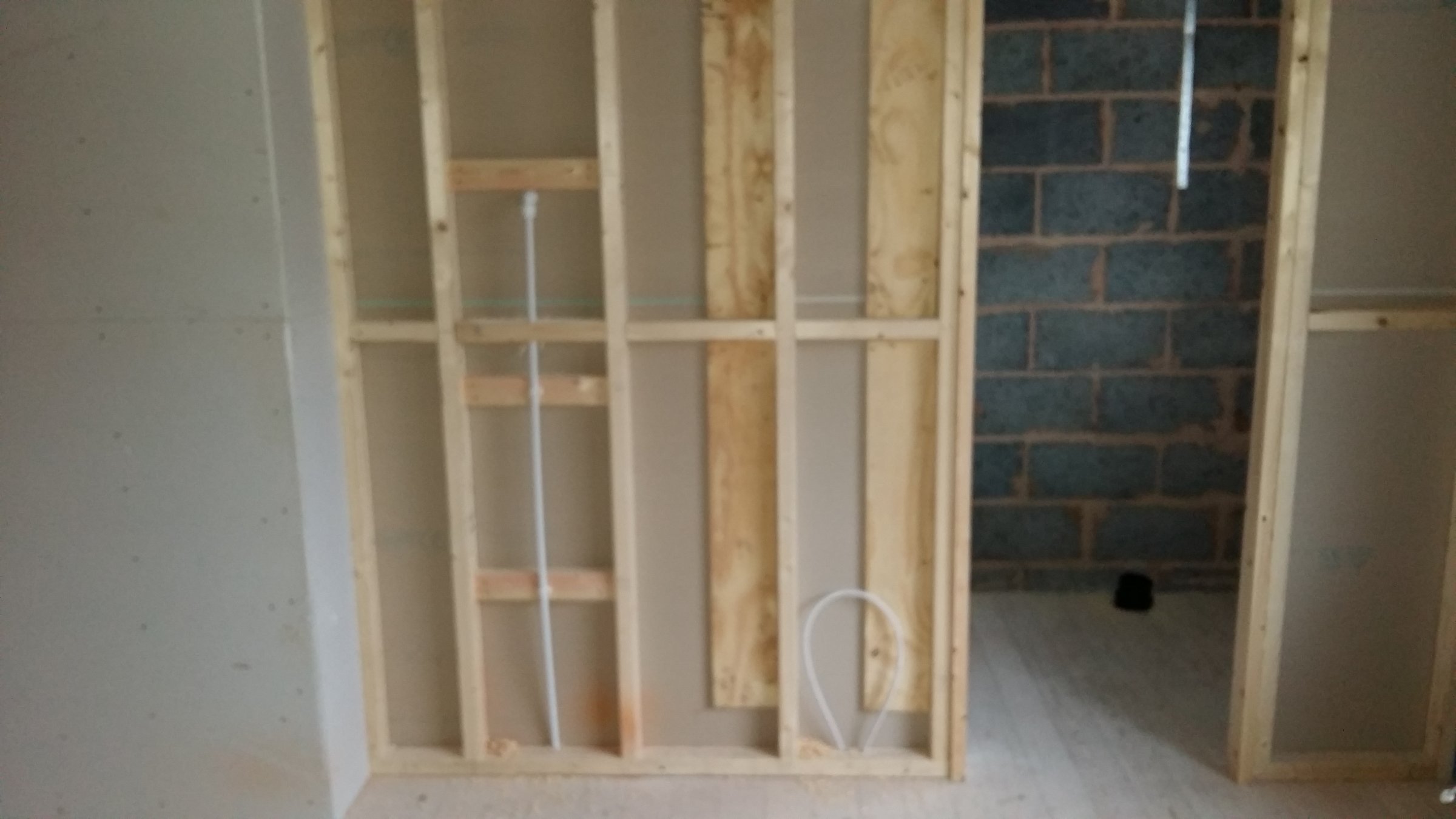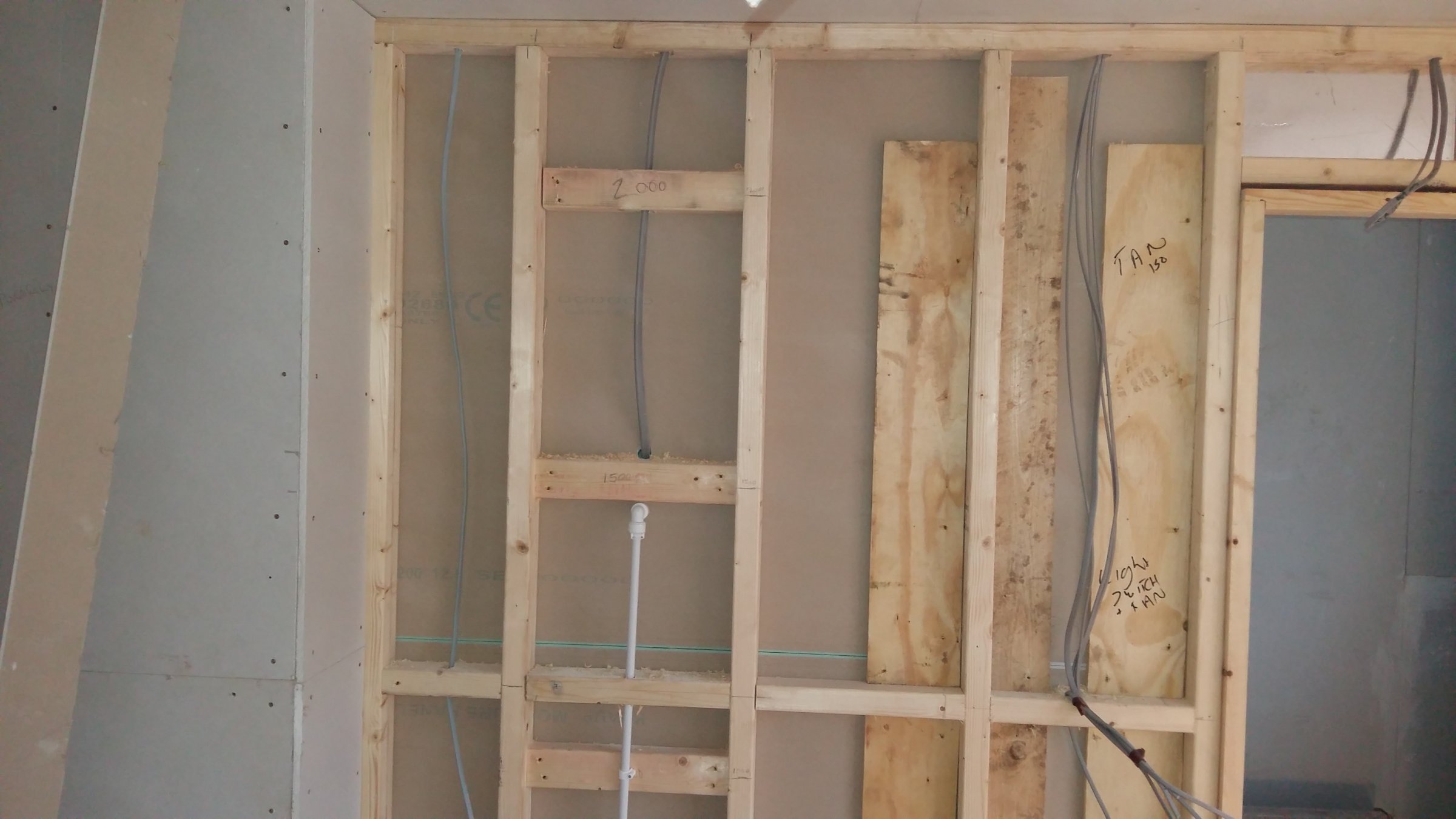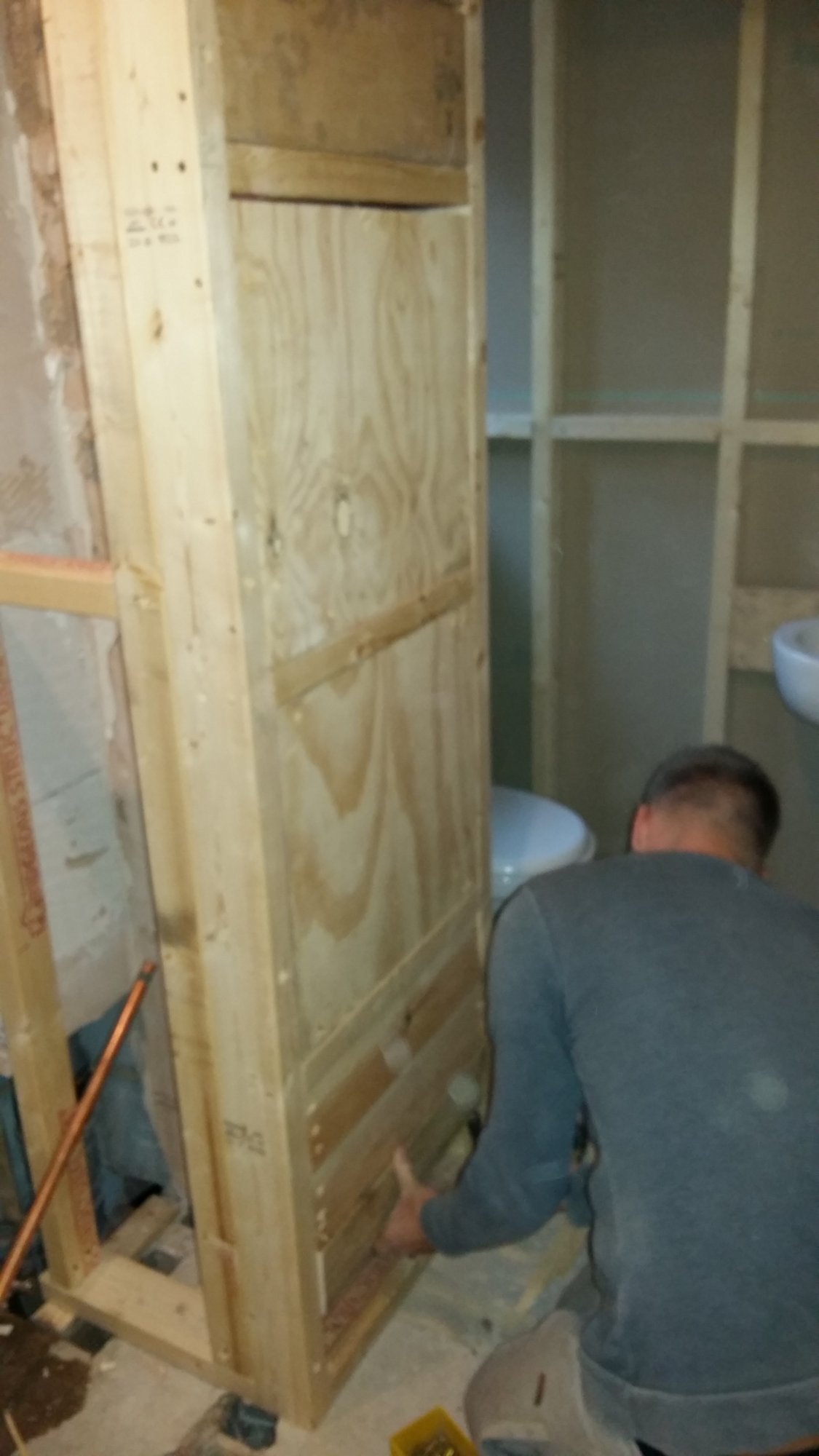68x38 is standard finished size cls. You get 100mm thick wall, well 102mm I guess as I'm using 15mm plasterboard for better noise reduction. Wikipedia says the 2 horizontal noggins are a good move for stiffness which is not a big increase in wood. I'm not sure how that affects sound transmission, probably a bit worse but it's hard to guess. On the one hand you have a stiffer structure so passes less noise but on the other hand you have more solid paths. Cavity will have sound insulation rockwool in it. I was thinking of going as tick as possible, say 50mm, but after reading
this, I might consider 30mm. The link basically says there is little difference between 50mm and 100mm cavity fill. I suspect that you just need some fill to kill the sound transmission, which is why gypsum say 25mm or more in their detail. I'd like to find tests 0/25/50mm rather than 50/100mm in the link.
I've also not been able to find data on gluing on the plasterboard. I've read that having the right number of screws is important. I would have thought brushing on some PVA to the studs (assuming timber) then screwing on the plasterboard would help insure a solid structure.
I'm tempted to stick with timber as I know it. You can hang shelves off timber studs. I'm not convinced that metal performs as well. There seems to be a lot of posts (mostly USA) of people trying to hang TVs off metal stud drywall and having to bolt a load spreader ply board to do this.
Update: I've just looked at British Gypsum white book. For the traditional timber stud, under fixtures (right at the end) it says cisterns, radiators, washbasins can be fixed direct to timber studs. The same section for gypwall classic metal C section says you need plywood. I think it's going to be timber studs.




